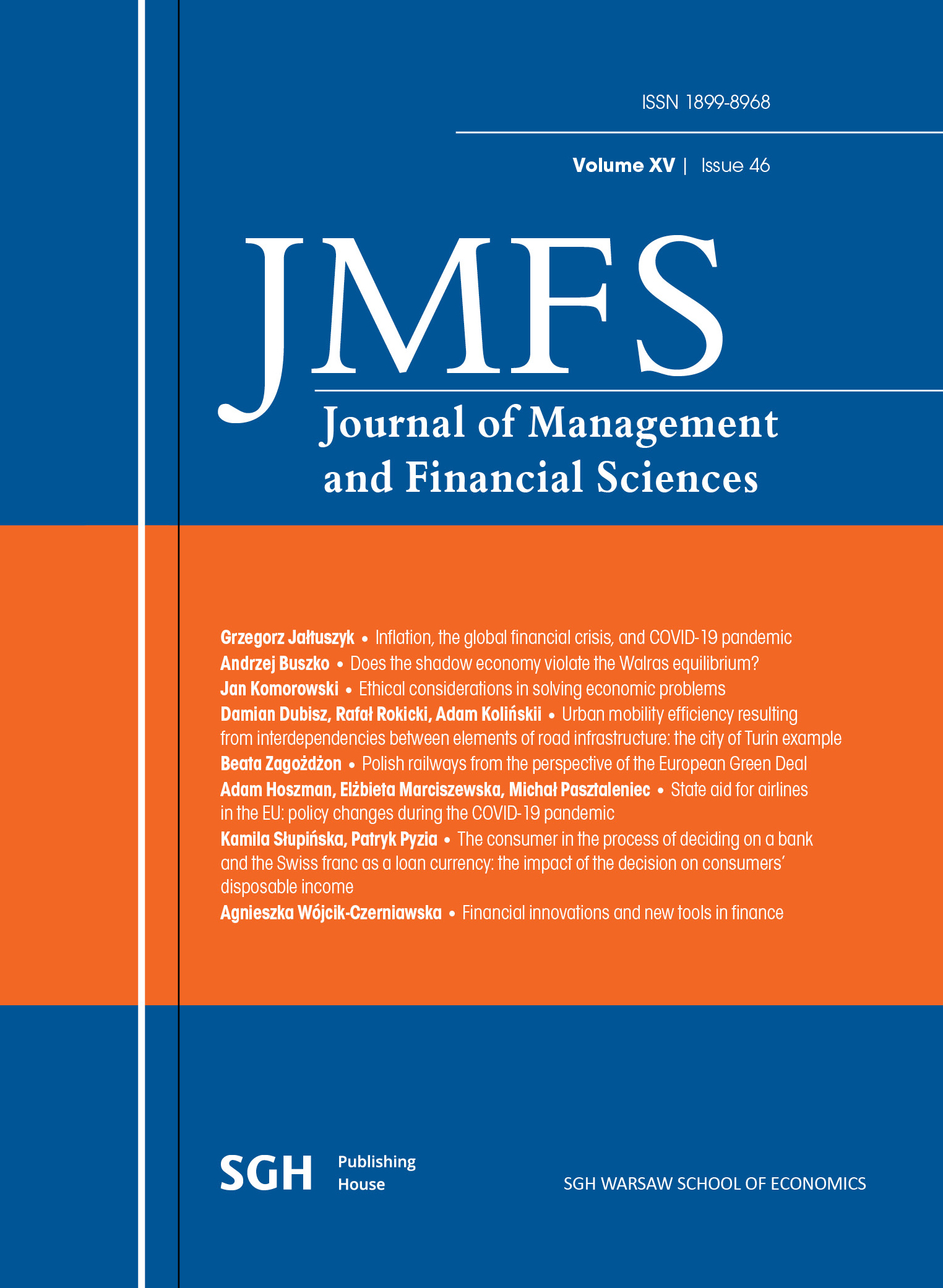Financial innovations and new tools in finance
Main Article Content
Abstract
A benefit in and of itself is not what makes innovation so valuable. In order to make the company ‘more innovative,’ you might hear someone advise a certain course of action. Additionally, a company’s ability to innovate successfully can serve as a magnet for the best and brightest in the industry. They become steadfast employees who appreciate the opportunity to be part of the company’s innovation efforts. Managing innovation is a systematic strategy to implement changes that aim to improve a company’s products, processes, or overall position. There must be an increase in sales or customer satisfaction, a stronger working relationship between the company’s many divisions, or a better working environment for employees as a result of the changes. Financing innovation refers to the development of new financial products, services, or procedures. Throughout the years, innovations in financial instruments and payment methods have fuelled financial innovation. Bank performance depends on financial innovation because it has the potential to boost the industry’s efficiency and profitability. Banks utilise financial and organisational innovation to save money and improve the sector. Using a cash dispensing machine provides users with an ability to withdraw money whenever and wherever they want. With a single click, you can receive or pay cash via mobile banking. This is a great choice for people who do not feel comfortable going to typical bank offices. With negligible transaction costs, it is one of the most cost-effective ways to evaluate financial services.
Downloads
Article Details
References
2. Asmundson, I. (2011). What are financial services? How consumers and businesses acquire financial goods such as loans and insurance. Finance Dev, 48, pp. 46–47.
3. Barras, J. (1986). Towards a theory of innovation in services. Res Policy, 15, pp. 161–173
4. Bara, A., Mugano, G., Le Roux, P. (2016). Financial innovation and economic growth in the SADC. African Journal of Science, Technology, Innovation and Development, 8(5), pp. 483–495.
5. Barrick, M.R., Mitchell, T.R., Stewart, G.L. (2003). Situational and Motivational Influences on Traits Behaviour Relationships? In: M.R. Barrick, A.M. Ryan (Eds.), Personality and Work: Reconsidering the Role of Personality in Organizations (pp. 60–92). San Francisco, CA: Jossey-Bass.
6. Batiz-Lazo, B., Woldesenbet, K. (2006). The dynamics of product and process innovations in UK banking. Int J Financ Serv Manag, 1, pp. 400–421.
7. Burgess, S. (2011). Measuring financial sector output and its contribution to UK GDP. Quarterly Bulletin. UK: Bank of England.
8. Chitra, K., Ramyasreedevi, V. (2011). Does Personality Traits Influence the Choice of Investment? The IUP Journal of Behavioural Finance, 7(2), pp. 47–57.
9. Curran, K., King, D. (2008). Investigating the human computer interaction problems with automated teller machine navigation menus. Interactive Technol Smart Educ, 5, pp. 59–7.
10. European Central Bank (2015). Monetary Financial Institutions [Online]. European Central Bank.
11. Financial Crisis Inquiry Commission (2011). The CDO Machine. In: P. Angelides (Ed.), Financial Crisis Inquiry Report. DIANE Publishing.
12. Frame, W.S., White, L.J. (2004). Empirical studies of financial innovation: lots of talk, little action? J Econ Literature, 42, pp. 116–144.
13. Germain, R. (2010). Financial governance in historical perspective: lessons from the 1920s. In: G. Underhill, J. Blom, D. Mügge (Eds.), Global financial integration thirty years on: from reform to crisis. New York: Cambridge University press.
14. Goode, M, Moutinho, L. (1995). The effects of free banking on overall satisfaction: the use of automated teller machines. Int J Bank Mark, 13, pp. 33–40.
15. Gubler, Z.J. (2011). The financial innovation process: theory and application. Delaware J Corporate Law, 36, pp. 55–119.
16. Harrington, S.E., Niehaus, G. (1999). Risk management and insurance. Irwin/McGraw-Hill.
17. Harper, T., Batiz-Lazo, B. (2013). Cashbox: the invention and globalization of the ATM. Canada: Butler Books.
18. Henry, C., Hill, F., Leitch, C. (2003). Entrepreneurship Education and Training: The Issue of Effectiveness. London: Ashgate Publishing.
19. Llewellyn, D. (1992). Financial innovation: a basic analysis. In: H. Cavanna (Ed.), Financial innovation. London: Routledge.
20. Lucas, D.J., Goodman, L.S., Fabozzi, F.J. (2008). Collateralized Debt Obligations: Structures and Analysis. Handbook of Finance.
21. Mullard, M. (2012). The credit rating agencies and their contribution to the financial crisis. The Political Quarterly, 83, pp. 77–79.
22. Nguena, C.L. (2019). On financial innovation in developing countries: The determinants of mobile banking and financial development in Africa. Journal of Innovation Economics Management, (2), pp. 69–94.
23. Nightingale, P., Poll, R. (2000). Innovation in investment banking: the dynamics of control systems within the Chandlerian firm. Ind Corp Chang, 9, pp. 113–141.
24. Owen, R., Stilgoe, J., Macnaghten, P., Gorman, M., Fisher, E., Guston, D. (2013). A framework for responsible innovation. In: R. Owen, J. Bessant, M. Heintz (Eds.), Responsible innovation: managing the responsible emergence of science and innovation in society. United Kingdom: Wiley.
25. Shane, S., Nicolau, N., Cherkas, L., Spector, T.D. (2010). Genetics, the Big Five, and the Tendency to be Self-Employed. The Journal of Applied Psychology, 95(6), pp. 1154–1162.
26. Siddik, M.N.A., Kabiraj, S. (2020). Digital finance for financial inclusion and inclusive growth. In: Digital transformation in business and society (pp. 155–168). Cham: Palgrave Macmillan.
27. Stefanadis, C. (2003). Self-regulation, innovation, and the financial industry. J Regul Econ, 23, pp. 5–25.
28. Tang, Y.M., Chau, K.Y., Hong, L., Ip, Y.K., Yan, W. (2021). Financial Innovation in Digital Payment with WeChat towards Electronic Business Success. Journal of Theoretical and Applied Electronic Commerce Research, 16(5), pp. 1844–1861.
29. Tidd, J., Bessant, J.R. (2009). Managing innovation: integrating technological, market and organizational change. Chichester: Wiley.
30. Zhao, H., Seibert, S.E. (2006). The Big Five Personality Dimensions and Entrepreneurial Status: A Meta-Analytical Review. The Journal of Applied Psychology, 91(2), pp. 259–271
